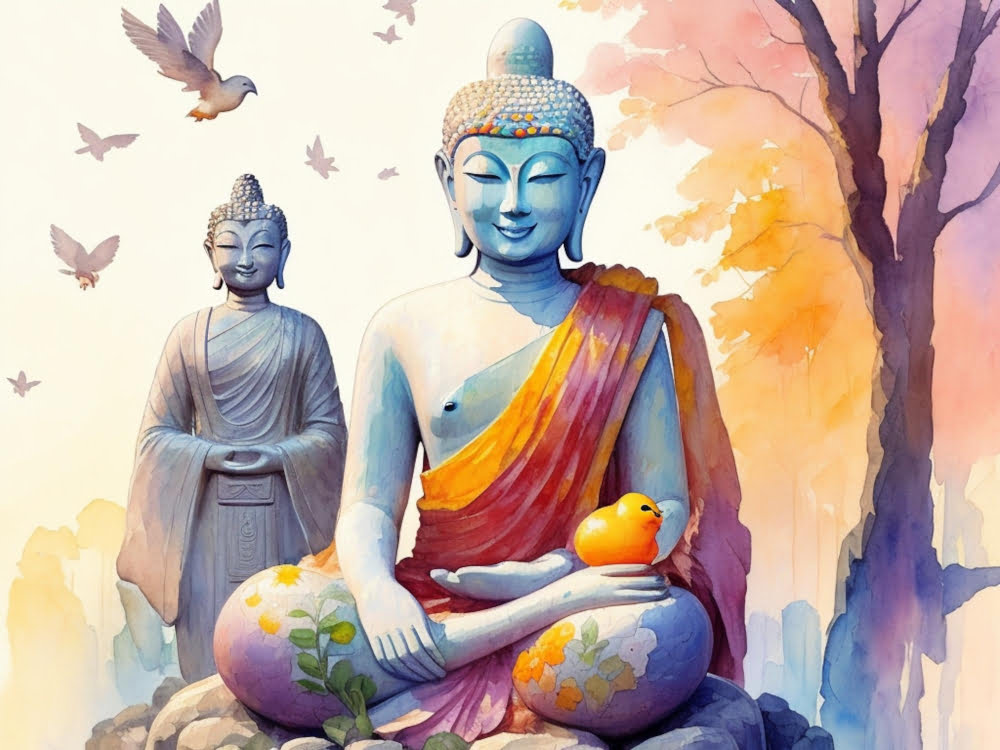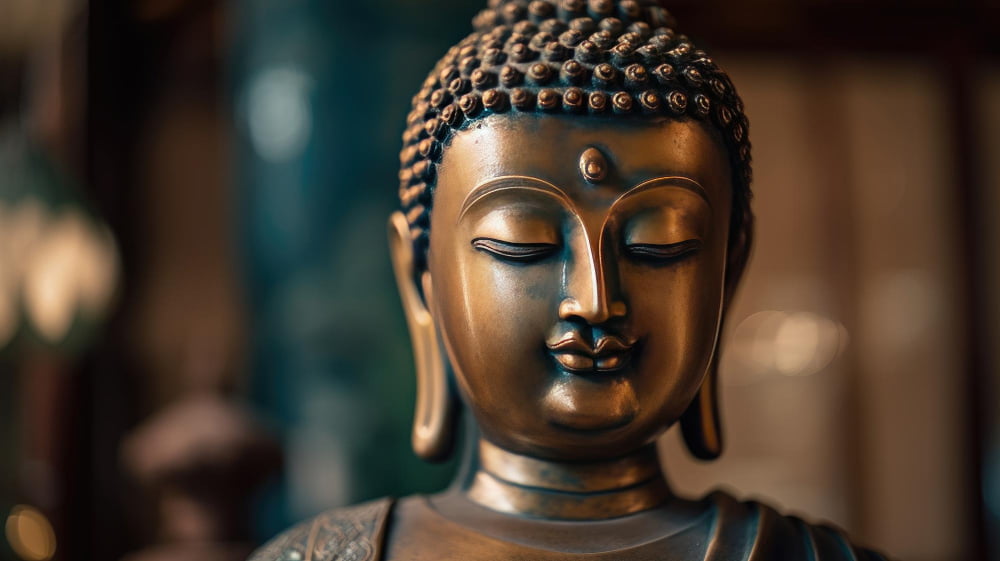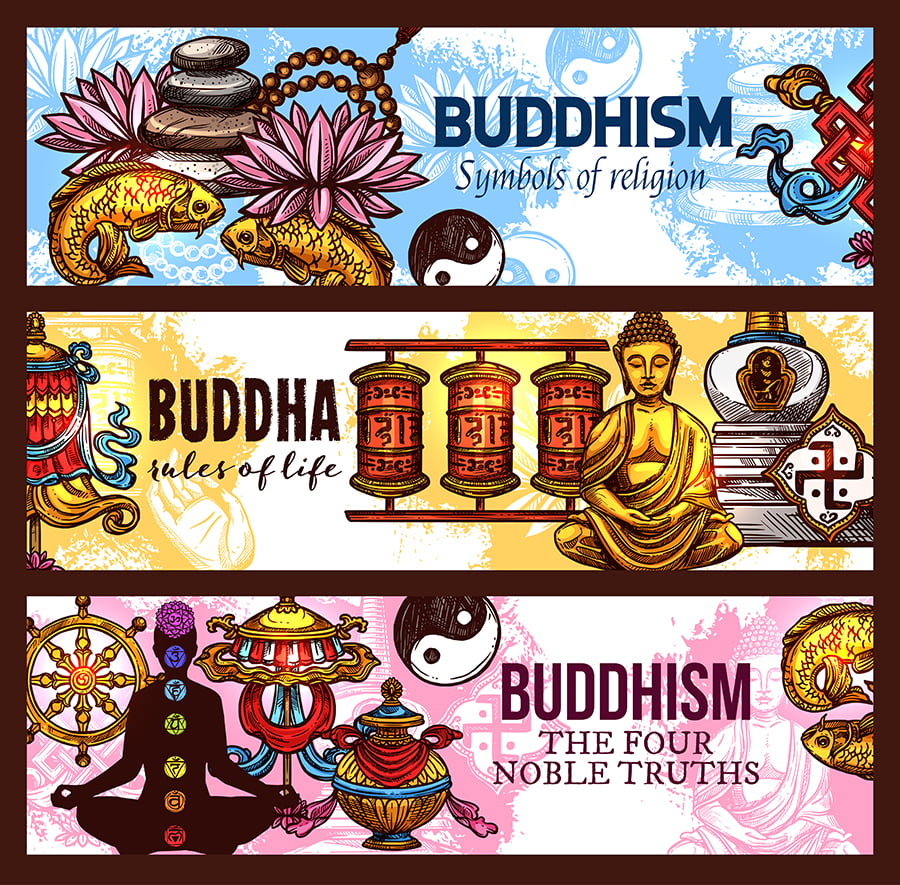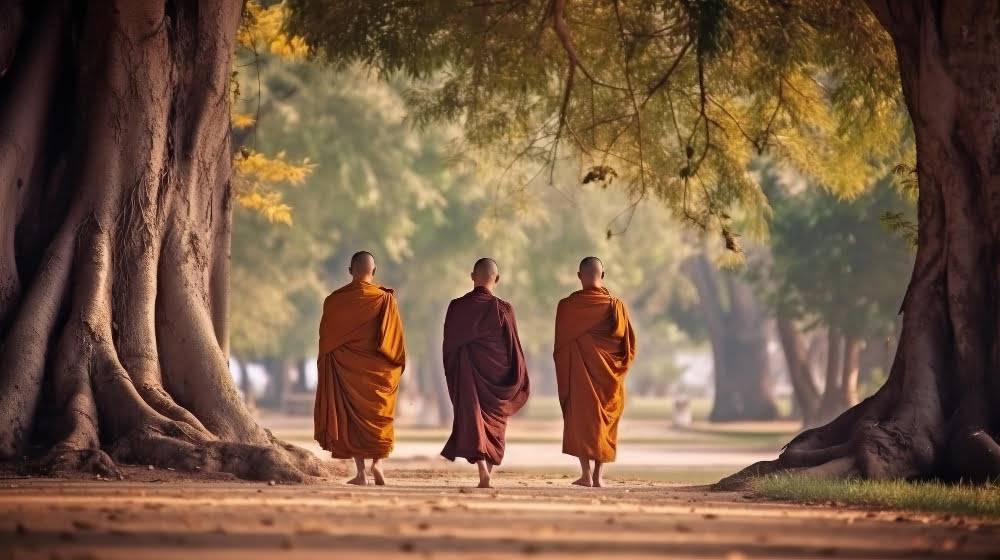Dive into this intriguing exploration of how long the Buddha meditated, because understanding his ancient practices may unlock new insights for your mindfulness journey.
The Buddha, also known as Siddhartha Gautama, meditated under the Bodhi tree for an estimated period of 49 days.
This profound and transformative meditation session led to his enlightenment, where he discovered the Four Noble Truths and the Eightfold Path – the core teachings of Buddhism.
This article will delve deeper into the Buddha’s meditation journey, the insights he gained, and the significance of his teachings in the practice of mindfulness and meditation today.
Stay tuned for a comprehensive exploration of the Buddha’s meditation experience and its profound impact on Buddhism and mindfulness practices worldwide.
Key takeaways:
- The Buddha meditated for 49 days under the Bodhi tree.
- The Four Noble Truths and the Eightfold Path were discovered during his meditation.
- Meditation in Buddhism includes mindfulness, concentration, insight, loving-kindness, and body scan.
- Buddha’s meditation lasted six years and involved intense concentration.
- Buddha’s teachings emphasize mindfulness, detachment, and perseverance.
Understanding the Concept of Meditation in Buddhism

Taking root from the Pali term ‘bhāvana’, which signifies ‘mental development’, meditation in Buddhism encompasses a variety of mindful practices aimed at promoting spiritual growth and enlightenment. Focused on the cultivation of mindfulness and alertness, it encourages a deeper understanding of life, nature, and self.
1. Mindfulness: By paying conscious attention to the present moment, while encapsulating a non-judgmental awareness of sensations, thoughts, and surrounding environment.
2. Concentration: The practice of sharpening the mind by consistently focusing on a specific thought or object.
3. Insight: Also known as Vipassana, this involves intuitive understanding of the true nature of phenomena, fostering wisdom and liberation.
4. Loving-Kindness: Known as Metta meditation, it cultivates an attitude of love and kindness towards all beings, fostering a sense of interconnectedness.
5. Body Scan: A type of meditation where attention is systematically moved through the body to create a holistic sense of awareness and relaxation.
6. Breathing Techniques: These techniques regulate the flow of breath, help to maintain focus, and induce calmness.
Remember, these practices are not mere exercises; they are pathways to self-discovery, tranquility, and, ultimately, enlightenment. Each serves its unique purpose in nurturing the mind, body, and spirit, aligning the practitioner with the Buddhist path’s core philosophies.
The Period of Buddha’s Meditation and Enlightenment

Siddhartha Gautama, who later became known as the Buddha, embarked on a meditative journey lasting six years. Following years of rigorous ascetic practices which left him weak and emaciated, he chose the “middle way” of meditation. He sat under the Bodhi tree in Bodh Gaya, India, vowing not to rise until he had obtained enlightenment.
During his fabled meditation period, often symbolized as ’49 days,’ his mind grappled with Mara, the personification of temptation, fear, and death. This hurdle was overcome when he touched the earth, asking it to bear witness to his right to achieve enlightenment. This event marked one of the most critical moments in Buddha’s life, known as the ‘earth-touching gesture.’
Following this, the Buddha spent the next 45 years teaching the insights he gained during his meditative retreat. His teachings, often referred to as Dharma, revolve around the Four Noble Truths and the Eightfold Path, highlighting a lifestyle of mindfulness, ethical actions, and meditation.
Details About Buddha’s Longest Meditation

The profound meditation period of Buddha lasted for six years. This feat wasn’t achieved overnight; it involved complete isolation and intense concentration.
During this period, the Buddha practiced what is known as Vipassana meditation, a form of mindfulness meditation that focuses on the interconnection between mind and body.
Over the course of these years, Siddhartha Gautama, who would later become known as Buddha, experienced significant physical duress, almost to the brink of death. He fasted extensively, abstaining from food and nearly all forms of nourishment.
Despite the harsh conditions, he retained his unyielding focus on achieving a distinctive mental state, a state that would allow profound insight into the nature of existence.
The Buddha’s meditation wasn’t merely about self-discipline or asceticism. It was a dedicated effort to understand and overcome human suffering. This profound understanding is considered a fundamental aspect of Buddhism.
His meditation explored the depths of despair, dissatisfaction, and doom, helping him consciously cultivate the virtues of compassion, wisdom, and awareness.
The intensity of his practice and his unyielding focus significantly illustrate the length of time the Buddha spent in meditation. It was during this period that he achieved enlightenment, a transformative experience that led to the birth of Buddhism.
Such an insightful and enlightening journey holds a key position in the Buddhist tradition and understanding of meditation.
Effects of Buddha’s Meditation On His Teachings

Buddha’s extended periods of meditation profoundly molded and influenced his teachings. Through deep, focused contemplation, he developed the Four Noble Truths, providing a blueprint for overcoming life’s suffering. His experiences from meditation eventually led to the cultivation of the Eightfold Path, a guide to ethical living to attain spiritual enlightenment.
Additionally, Buddha’s teachings emphasized mindfulness, a concept he directly derived from his meditation practice. Mindfulness, or the practice of being fully aware and present in each moment, became a cornerstone in Buddhist teachings. This clear, succinct understanding of one’s thought process encourages compassion, altruism, and patience, virtues that Buddha espoused in his teachings.
Moreover, meditation played a vital role in Buddha’s instruction regarding detachment. Through meditation, Buddha learned to disentangle himself from earthly desires and attachments, a principle he thoroughly integrated into his teachings. This detachment leads to inner peace and contentment by remaining unfazed by life’s ebb and flow.
Lastly, Buddha’s disciplined meditation practice taught the importance of perseverance and commitment. To attain enlightenment, to truly comprehend the nature of reality and self, demands dedication, a lesson mirrored in the expectations from his followers.
The Implication of Buddha’s Meditation Duration in Today’s Practice

With Buddha’s meditation as a guide, practitioners today harness the power of consistency and patience. Buddha’s longevity in meditation emphasizes the journey over the destination, encouraging individuals to appreciate each moment.
1. Emphasis on Long Term Practice
The duration of Buddha’s meditation becomes a testament to the importance of sustained practice over time. It’s not about achieving rapid results, but cultivating a profound, enduring transformation.
2. Prioritization of Mindfulness
His meditation length reflects the emphasis on continuous mindfulness. It serves as a constant reminder to keep oneself firmly anchored in the present moment.
3. Patience and Persistence
Through understanding the long hours Buddha committed to his practice, today’s practitioners develop patience and resilience, recognizing that progress may not be instant.
4. Personal Development
Buddha’s long-term meditation span signifies the importance of individual growth and inner exploration over time, encouraging a journey of self-discovery.
5. Beyond Temporary Relief
Buddha’s meditation shows us that meditation isn’t just a quick fix for momentary peace, but a pathway to achieve lasting enlightenment and tranquility.
Practical Applications of Buddha’s Meditation Techniques

Incorporating the Buddha’s meditation techniques into daily practice can have profound effects on personal growth and tranquility.
1. Anapanasati: Also known as mindfulness of breath, this technique encourages focusing on inhalation and exhalation to cultivate concentration and mindfulness.
2. Vipassana: This method, whose name translates to ‘insight,’ allows practitioners to gain a deeper understanding of the nature of reality and self by observing sensory experience with a detached, non-reactive mindset.
3. Metta Bhavana: This technique promotes the generation of loving-kindness towards oneself and others, fostering a sense of compassion and emotional positivity.
4. Walking Meditation: Practised by Buddha himself, this technique involves maintaining mindfulness while walking. It serves as a beneficial additional practice for periods when sitting meditation may seem strenuous.
5. Body Scan: A technique that encourages observing bodily sensations without judgment, fostering a stronger mind-body connection.
Remember, the key to successful meditation, as demonstrated by Buddha, lies in the consistency of practice rather than the length of each session.
How Buddha’s Meditation Influenced Buddhism’s Development

Shaping the very core of Buddhism, Buddha’s meditation practices played a significant role in its advancement. The central teachings, like the Four Noble Truths and the Eightfold Path, embody insights derived from deep meditation periods.
Much of these teachings emphasize mindfulness and concentration, both hallmarks of meditation.
Appreciating the world around us, Buddha encouraged an exploration of reality through a direct, personalized meditation experience. The lessons of impermanence, self-lessness, and dissatisfaction, fundamental tenets of Buddhism, find their roots in Buddha’s profound meditation experiences.
More so, guided meditation techniques, such as Vipassana and Metta Bhavana, which are central to Buddhist practice today, originated from Buddha’s own meditation practices. In essence, Buddha’s meditation not only laid the foundational stones for Buddhism but also substantially influenced its evolution into a wisdom tradition practiced worldwide.
FAQ
How many years did Buddha meditate?
Buddha meditated for a span of six years.
Where did Buddha meditate for 6 years?
Buddha meditated for 6 years in the caves of Dungeshwari, also known as Pragbodhi.
What is the longest meditation time?
The record for the longest meditation session is three days, achieved by Vivekananda from December 25 to 27, 1892.
Did Buddha fast for 40 days?
No, Buddha did not fast for 40 days, he fasted for forty-nine days after reaching enlightenment.
Which meditation technique did Buddha utilize during his meditative practice?
Buddha utilized the Vipassana, also known as Insight Meditation, during his meditative practice.
How did prolonged meditation contribute to Buddha’s enlightenment?
Prolonged meditation allowed Buddha to achieve a transcendent state of consciousness, known as Nirvana, leading to his enlightenment.
What impact does this extended meditation practice of Buddha have on modern meditation practices?
The extended meditation practice of Buddha deeply influences modern meditation practices by emphasizing mindfulness, disciplined thought control, and spiritual self-discovery.